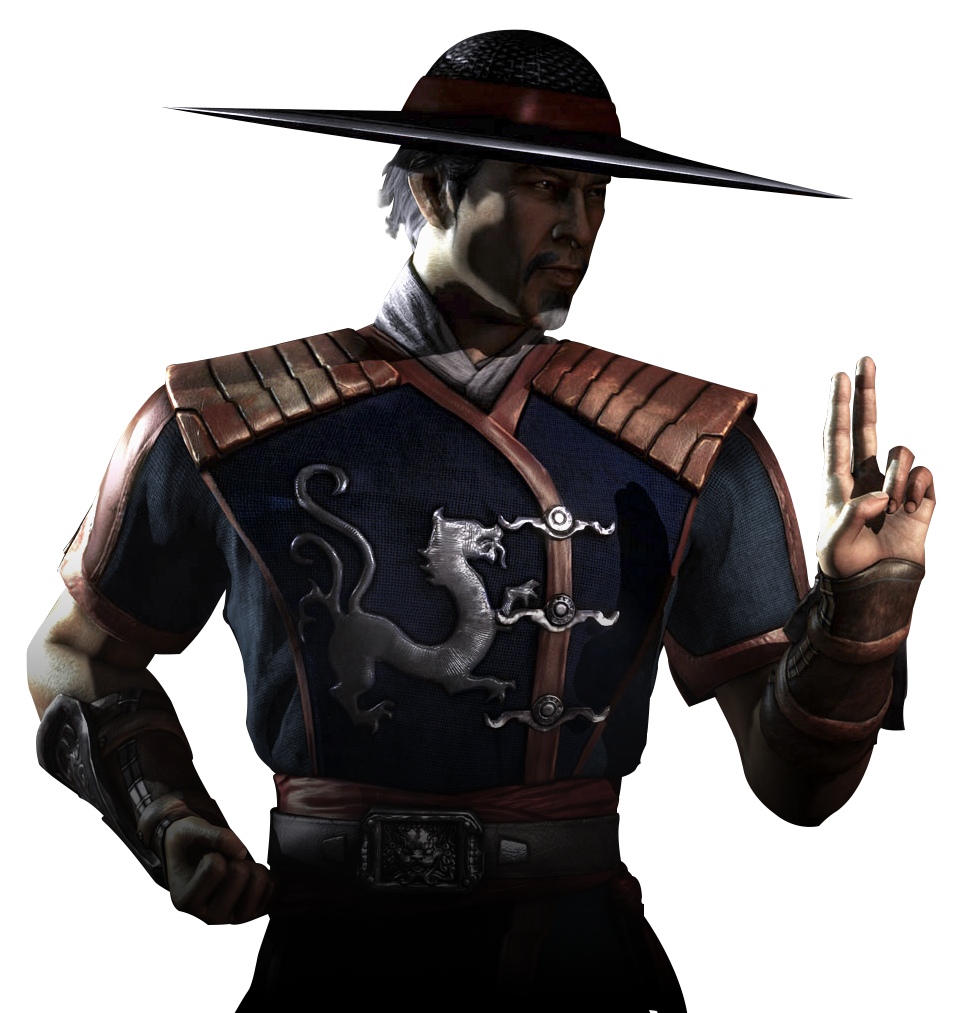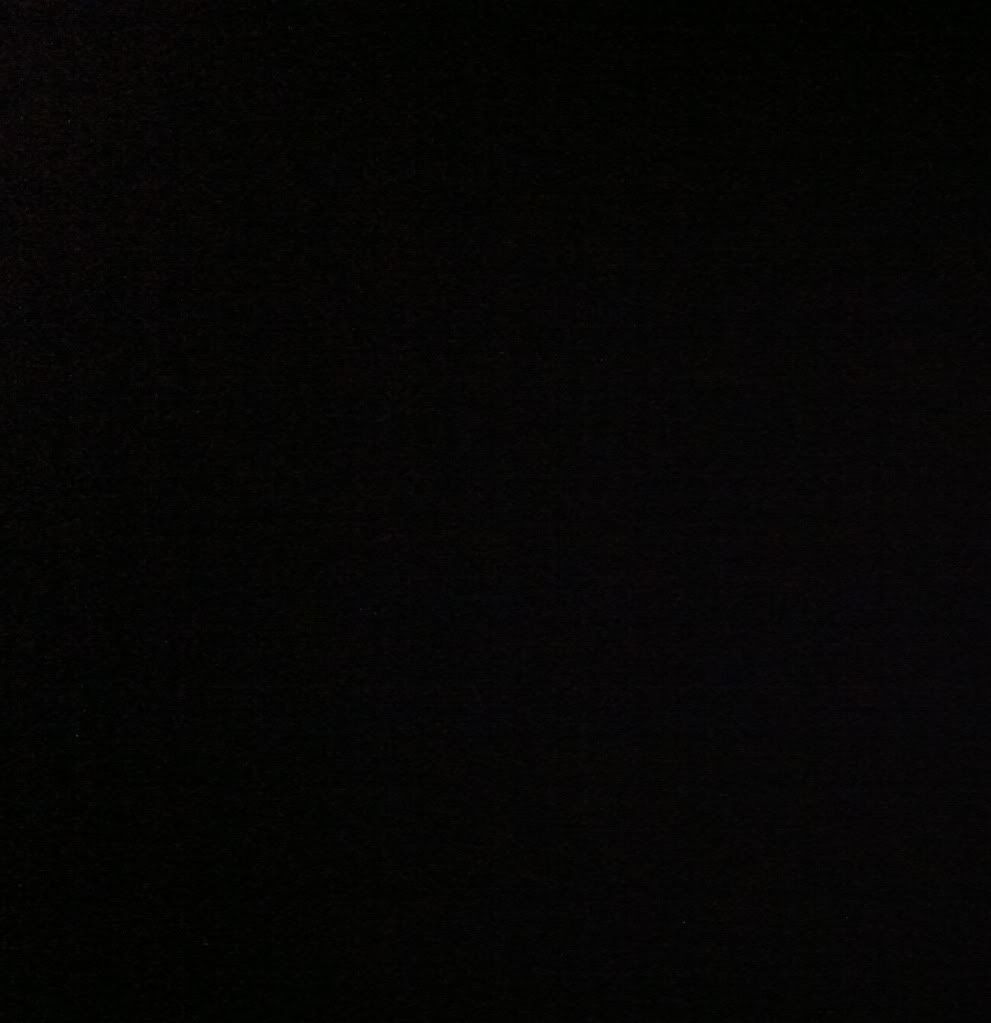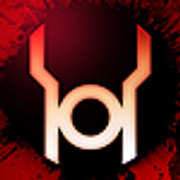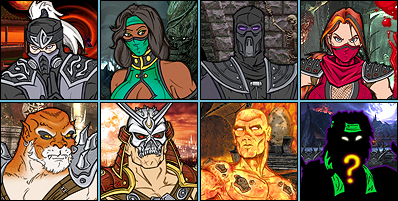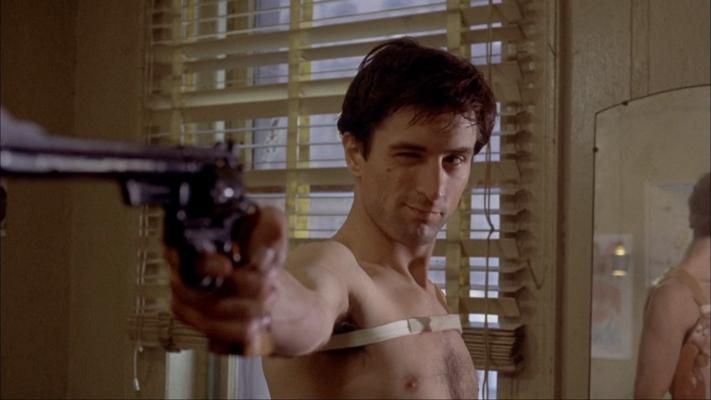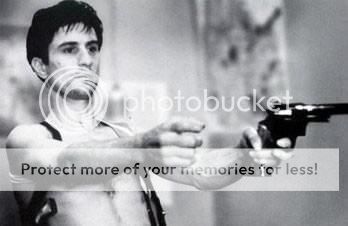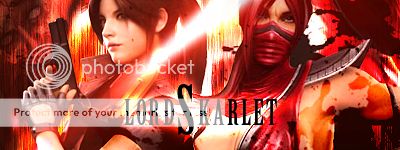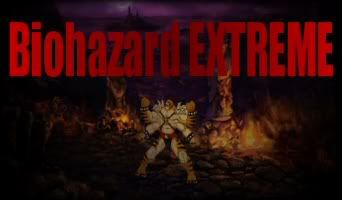According to the traditions of the Chinese calendar, 2012 is determined the current Year of the Dragon. If impressions are anything to go by, it was purely serendipity that made this the perfect date for the twentieth anniversary of a series so widely identified by its iconic Dragon Logo.
The origin of the Dragon Logo symbol was just one of the topics covered when Mortal Kombat Online entered in to a conversation with a man whose legacy now far exceeds his time with the Mortal Kombat franchise.
It has become tradition for Mortal Kombat Online interviews to begin with the simple question of, in their own words, who the subject is. In the case of John Tobias, introductions are hardly needed. Together with Ed Boon, Tobias is credited as being the co-creator of Mortal Kombat -- a video game dynasty that dominated arcades until their eventual demise at the turn of the millenium, and continues to rule on home consoles.
As the man responsible for creating the original characters (and premise) that have populated Mortal Kombat in its every iteration, the influence of John Tobias is felt throughout the series -- even in the latest game, which set out to reboot the franchise by rewriting its history.
Join us in returning to the original source as John Tobias discusses Mortal Kombat's origins. In Part 1, we review how the series got its start, the names and faces that nearly led it down a different path, and the impact and legacy the original games have had.
Left-to-Right: John Tobias, Carlos "Raiden" Pesina & Ed Boon.
[Mortal Kombat Online]: For people who might not know: Who are you and why are you the avatar to which we bow?
[John Tobias]: I co-created Mortal Kombat and all of the original characters: Liu Kang, Goro, and Scorpion and Sub-Zero [etc], back in the early nineties.
Mortal Kombat is celebrating twenty massive years. At what point did you get a sense this was a saga that was going to endure? Was it always intended to be a franchise, or is this unfathomable to a John Tobias of 10, 15, or 20 years ago?
When we were working on MK1 our focus was on the game itself. Ideas of sequels or ancillary successes weren't even a part of the thought process. Although, when creating the fiction, I had grand thoughts of a vast universe that I wasn't sure I'd have a chance to explore outside of the original game. So, I guess John Tobias of 20 years ago was clueless as to the ultimate success of the game.
You just never know when something is going to hit or miss.
You can have a good feeling about it and we had that around the office when MK was in development. Our first weekend test attracted a huge crowd around the machine, which was a pretty good indicator for us. I remember whenever I walked into a test location, hearing the loud thump of Dan Forden's uppercut sound as a signature of MK's presence in an arcade.
Take us back to the very beginning. Before there was "Mortal Kombat" - how did you assemble the team?
The first coin-op game I worked on was called Smash TV and it featured tiny, hand animated character sprites. While working on a sort of follow-up to that game, called Total Carnage, I wanted to create a game with much larger characters on-screen. That was the inception of the idea for me and that led to thoughts of a style of game that would allow me to do that. The first one I thought of was a game I played in arcades when I was younger called Karate Champ. I knew that a one-on-one fighter like that would allow us to feature much larger characters.
I approached Ed Boon, who was programming a football game called Super High Impact, and he was totally up for it. Dan Forden worked with Ed on that and came on board to do music and FX. John Vogel came on a portion of the way through between his other projects to help out on the backgrounds.
What were some of the key influences on the development of the project?
My influences came from a lot of different places, but mostly from my love for Hong Kong martial arts films. I watched a ton of the old Shaw Brothers films and was blown away by Tsui Hark's films back in the late eighties. People point to John Carpenter's Big Trouble In Little China, which has a few real obvious influences, but for me, I was just paying homage to that film, which still is one of my favorites.
I always saw Mortal Kombat as a big mash-up of those eastern influences with a western sensibility. I've said before that I think MKs success with its mythology and characters comes from a balance between fantasy -- which in this case is represented by eastern influences -- and reality, which is represented by western influences. You can see that in characters like Liu Kang or Shang Tsung, who represented the more mystical sides of the story, and Johnny Cage, Sonya or Jax, who came from places grounded more in reality.
I think the interaction of those character archetypes is a huge part of MK's secret sauce. When it leans too much one way or another it just doesn't feel right.
The marriage of East and West made MK an instant winner.
Jean Claude Van Damme: a man as much of the times as MK itself and infamously attached to play a part. How did that come about and how did it shape things to come?
When the game was still merely an idea in our heads, we thought that it would be necessary to attach a license to the project to justify its existence to our management.
I believe Roger Sharpe (famous pinball aficionado and historian), who handled Midway's licensing deals at the time, was approached by a movie studio with Van Damme's Universal Soldier film as a possible game tie-in.
We envisioned Van Damme's involvement as a character in our game's story, or as playing himself in the game. That deal didn't pan out and we simply moved on. I think it was probably a good thing because who can guess what restrictions we may have been working under. Without a licensed tie-in we were free to do what we wanted.
The title and dragon logo are such a succinct element. How did the "Mortal Kombat" name come about, and was there ever any other title or logo in the running?
We would write ideas for the game's title on a marker board in Ed's office and there were a ton of them and some were god awful. "Dragon Attack" and "Ultimate Kumite" were two that were actually considered. I laugh now about how close we came to using those names.
I remember Mortal Combat coming from a pinball designer named Steve Ritchie. I know that we changed the C to a K for trademark reasons.
The dragon icon actually came from a small dragon statue that our general manager, Ken Fedesna, had on his desk. I believe John Vogel, who constructed our background graphics, digitized and used it in the backgrounds. I used it as reference for the dragon that appears on the coin-op game's side cabinet artwork. That dragon's head became the circular dragon symbol that is still used today.
A funny story I like to tell is that I was up late one night at my drafting table, I was still living with my folks at the time, and my sister came into my room and saw me working on the dragon icon sketch. She asked me why I was drawing a seahorse and I literally tossed the sketch aside and started a new one. Luckily I went back to that sketch and refined it a bit.
Games like Street Fighter II presented a popular understanding of the format, but Mortal Kombat really established itself as something unique. How did you arrive at a tournament with a such a grandiose sense of mythology behind it? Was it a deliberate point of difference?
I think like a lot of designers, and even ones today, I had this misplaced desire to actually tell a story in a game.
Around the time I began work on Mortal Kombat, I was a little frustrated with the coin-op medium and our inability to tell a "real" story with it. It forced me to try to tell a story without actual exposition.
I thought a simple scenario that players could relate to and archetypal characters would take us a long way in achieving that. We used brief attract mode sequences with snippets of character bios and I hoped that the combination of those things would be enough for the players to kind of fill in the blanks.
The game and the characters would have a mysterious vibe because players would create scenarios in their heads about how these characters related to each other based on their archetypes. I think people who dismiss MK's storyline don't comprehend the very core of how story is told. It isn't with the 'blah blah blah' of dialog exchanges. It's with premise and character archetypes. Those are things that even I lost sight of as technology improved. So, within those parameters I had this grandiose story that I wasn't sure would ever see the light of day. Fortunately we were able to explore it in sequels and the like.
For anyone hitting arcades, the vision of Goro had to be second only to the title logo itself, in terms of iconography. How did a 500 hundred year old, four-armed half-dragon come to be the figure that loomed over an otherwise humble, mortal martial arts tournament?
We wanted to have a brutish character as our boss and I remember thinking of the old Ray Harryhausen films like Jason and The Argonauts and their use of stop-motion animation as being the perfect remedy.
I thought it would work well for us because our characters already had limited sets of animation, so a stop-motion puppet would fit right in.
The characters of the first game have remained the most iconic, with rare exception. What do you think made them so beloved and enduring?
Again, I think it was choice in character archetypes and understanding the place that they fit within our little universe. Who they are, what they look like, and how they relate to each other.
Everyone has their favorite character and in their mind that character may be their hero because they like playing with [them], but there was only one true hero in the original games' stories and that was Liu Kang.
I think sticking to our guns with character archetypes in the first few games is what made those characters stick in terms of story. As the game's roster expanded doing that well became more and more difficult.
Do you think it's possible to create new characters that can have the same impact?
That's a tough question. I think the problem you face is that the original characters have been around so long and have become iconic to the franchise. It's a juggling act for the guys at Nertherrealm today as it was for us back then. You can look at other franchises, like the X-Men for example, where there have been tons of new team members, but characters like Cyclops, Storm, Jean Grey, Professor X, Magneto, and Wolverine will always be the core of who they are.
Can you replace them? Sure, but why? The X-Men will always have Wolverine and MK will always have Scorpion and I don't think that's a bad thing.
Mortal Kombat II didn't have any trouble making an impact. For many, it's still regarded the best of the series. How did you approach the prospect of a sequel? Were there pressures or expectations?
There was some pressure, but we knew we were going to have more time to develop it and we knew that there were some things that we could do better to improve the process. So, from that point there was a certain level of confidence that we had as well.
Does the enduring success of Mortal Kombat II surprise you?
The enduring success of the franchise in general is a testament to its place in popular culture and the great talent and hard work of the people who continue to be involved with the series.
MKII really goes deep into the aesthetic and mythology that would become associated specifically with the MK style. What prompted the shift and how deliberate was it?
I think the first game kind of opened the floodgates to a much broader story. I made a conscious effort in the first game's premise to setup a much larger universe that I thought players would be hungry to learn about. For example, we knew Shang Tsung served a higher power, but who was that power and where did they come from?
MKII's story influences came from the same places as the first game. One influence came from the first two Star Wars films, where you knew that there was an emperor ruling the universe, but knew nothing else about him. It created a desire in the viewer to want to know more. I think we had something very similar with Shang Tsung and Shao Kahn and for me that came from that feeling I had as a kid when I learned more about what made the Star Wars universe tick in Empire Strikes Back. I wanted MK fans to have that same feeling.
With MKII, we're still a year away from the formation of the ESRB, but the controversy is well underway. As MK finds its unique voice in MKII, it's adding as much humor as it is gore. How vital to the series do you think fatalities and extreme violence were?
We never set out to make an ultra-violent game. That just happened as a part of development and was right for the product we were creating. But, it unquestionably helped drag Mortal Kombat into pop culture's spotlight.
As Mortal Kombat made the transition to home consoles and player demographics skewed younger, I can see where it was necessary and entirely appropriate for the ESRB to create the rating system. But, the use by politicians of games as a scapegoat for the ills of society was as tired then as it was for the comic book industry back in the fifties. I think our industry was fortunate to come out of it relatively unscathed.
I don't think the violence or the fatalities ever became too big a distraction for the actual players who were more enamored by the mechanics of play, which is the core reason why players play a game.
There were a lot of imitators quick to latch on to the fatality gimmick and elements associated with MK. How did the team react to the copycats as they started to emerge?
We were always so busy working on the next iteration of the game that that stuff just kind of passed me by. I do remember thinking that anyone who really believes that the only reason players play MK is for the violence probably has never really played MK.
"... anyone who really believes that the only reason players play MK is for the violence probably has never really played MK."
Gender in video games has become the new hotbed of critical discussion. Kitana and Sonya remain two of the strongest and earliest female leads in gaming. How did they come about and do you see them as a vital legacy for the series?
Sure, they were both important pieces of the game's fiction and archetypal structure of characters. But, our player demographic was primarily a hardcore male audience and so the look and design of our female characters pandered to them back then just as they do today.
I have no problem being apologetic for that. The only solace I can offer is that both of those characters had very strong, atypical female archetypes... and at the very least could kick the hell out of their male counterparts.
In 1995, MK3 represented a radical shift in design and style. Western concepts really overwhelm MK3. What prompted the change in philosophy?
Western concepts overwhelmed in setting only. The thought was that we went to the Outworld in MKII and so now the Outworld is going to come to us. Our reality gets swallowed up by this mystical world and how can we possibly turn it back.
Stryker: Will there ever be a rainbow?
Sure, why not?
The abandonment of icons like Scorpion and Kitana ultimately provoked revisions to the MK3 game. What was the impetus for leaving them out, and did you feel it was the right move to add them back in?
Actually, leaving them out had nothing to do with provoking UMK3.
UMK3 was done to appease arcade operators and make up for the sooner than usual release of MK3's home version by keeping the arcade version fresh.
So concludes the first installment of our conversation with John Tobias. In Part 2, we reflect on later stages of the series, Tobias' infamous departure, the conquest of MK in film, spin-off projects like Special Forces, and the truth about Tremor.
Mortal Kombat Online must thank John Tobias for his time and involvement. Share your nostalgia for the early days in the Year of the Dragon anniversary thread. Stay tuned to additional updates from around the web by following @MK_Online and liking us on Facebook.





